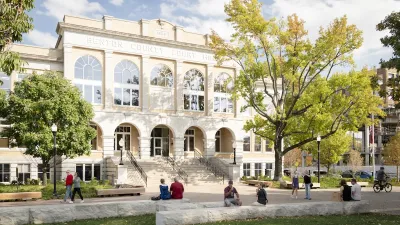Already, the Ghost Ship tragedy is being used as a justification for code enforcement crackdowns that will likely further gentrification. But how can we combat gentrification and displacement and improve safety at the same time?
It’s usually hard to distinguish a victim of gentrification. Many people have a story of getting priced out of their neighborhoods, of being looked at with mistrust by their new neighbors, or of creating beauty with few financial resources, only to have that aesthetic co-opted by capitalism. But gentrification isn’t usually as directly fatal as it was in Oakland earlier [last] week.
At the time of this writing, 36 people have died in a fire at the Ghost Ship warehouse, which was a live-work-play space for artists who were trying to hang on to community in the face of San Francisco’s tech boom. The space lacked sprinklers, fire exits, and other important safety features, increasing the chance of a deadly accident. 2016 has been an awful year, but Ghost Ship has hit my community of queers, artists, and others on the margin particularly hard because it could so easily have been any of us. Some of the highlights of my life have taken place in crumbling buildings packed with my beloveds, where the floors shook with our dancing, or we sat on each other’s laps to listen to a band.
We are going to need community now more than ever to weather the incoming administration, but in the back of our minds, we will wonder whether it’s safe to gather. I have resources and could leave, although my life would be colder and less interesting. The ones that will be left in unsafe situations are the ones for whom a structurally unsafe home is better than the alternative.
FULL STORY: Gentrification Was the Killer in Oakland Fire

Alabama: Trump Terminates Settlements for Black Communities Harmed By Raw Sewage
Trump deemed the landmark civil rights agreement “illegal DEI and environmental justice policy.”

Planetizen Federal Action Tracker
A weekly monitor of how Trump’s orders and actions are impacting planners and planning in America.

The 120 Year Old Tiny Home Villages That Sheltered San Francisco’s Earthquake Refugees
More than a century ago, San Francisco mobilized to house thousands of residents displaced by the 1906 earthquake. Could their strategy offer a model for the present?

In Both Crashes and Crime, Public Transportation is Far Safer than Driving
Contrary to popular assumptions, public transportation has far lower crash and crime rates than automobile travel. For safer communities, improve and encourage transit travel.

Report: Zoning Reforms Should Complement Nashville’s Ambitious Transit Plan
Without reform, restrictive zoning codes will limit the impact of the city’s planned transit expansion and could exclude some of the residents who depend on transit the most.

Judge Orders Release of Frozen IRA, IIJA Funding
The decision is a victory for environmental groups who charged that freezing funds for critical infrastructure and disaster response programs caused “real and irreparable harm” to communities.
Urban Design for Planners 1: Software Tools
This six-course series explores essential urban design concepts using open source software and equips planners with the tools they need to participate fully in the urban design process.
Planning for Universal Design
Learn the tools for implementing Universal Design in planning regulations.
Clanton & Associates, Inc.
Jessamine County Fiscal Court
Institute for Housing and Urban Development Studies (IHS)
City of Grandview
Harvard GSD Executive Education
Toledo-Lucas County Plan Commissions
Salt Lake City
NYU Wagner Graduate School of Public Service





























